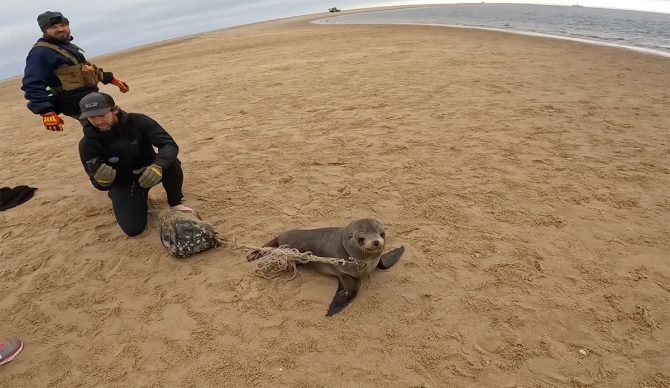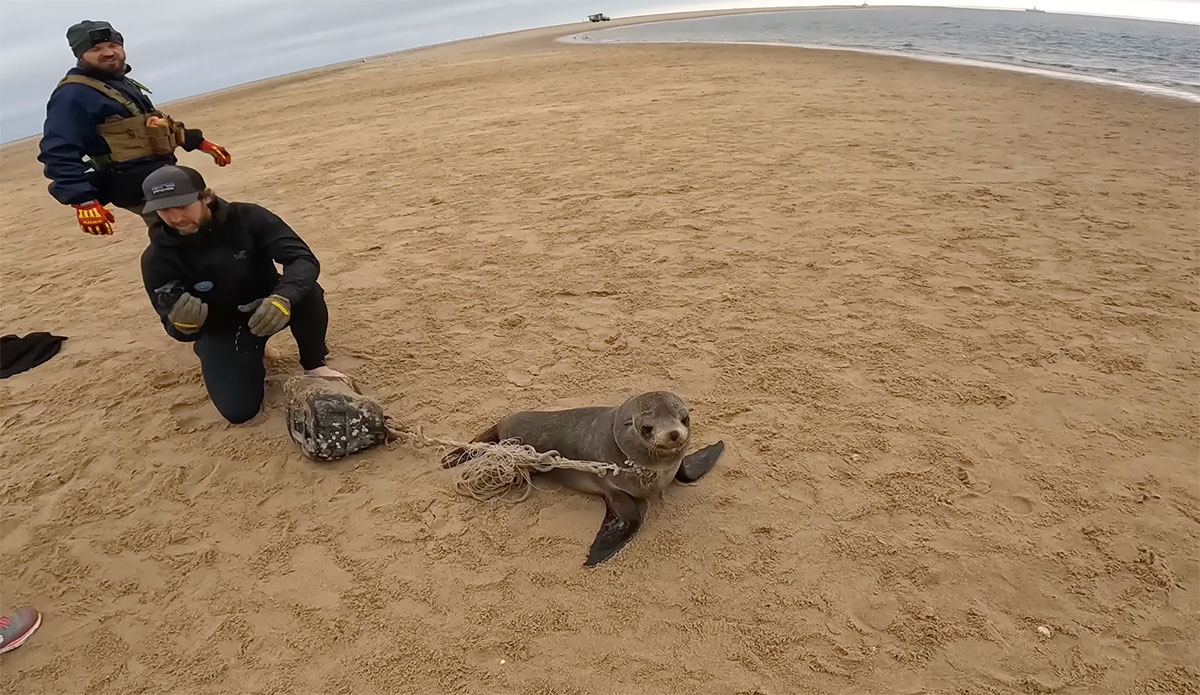
Not easy to swim with a bucket trailing behind you. Photo: YouTube//Screenshot
![]()
Imagine, if you will, a remote beach that is routinely covered in Cape Fur seals. They’re there, in part, because of the remoteness. The beach at Pelican Point, Namibia, just a stone’s throw from one of the world’s most amazing left-handers, is a haven for seals looking to escape the grasping hands of man. Our hands, unfortunately, leave scars even if our hands aren’t on that beach. Last year, Ocean Conservation Namibia (OCN) workers found a heartbreaking sight: a pair entangled seals, one of which was a baby seal dragging a bucket attached to a rope.
“The line was so tight around the seal’s neck and not cutting it yet,” OCN wrote. “Seeing the seal fill up with air after the last line was cut was such a huge relief.”
Sadly, this is an all-too-common sight for the seal rescue team at OCN. While they do their very best to save as many animals as they can, there are countless others that fall victim to the perils of simply existing alongside humans.
“There are many reasons why this seal would not have made it back to shore, for example, with water getting in the bucket, etc.,” OCN continued. “Every time we find such mind-boggling entanglements, it raises immense concern about how many animals never make it, so this baby seal is really lucky.”
Ocean Conservation Namibia is a group of extraordinarily selfless folks who spend their days sprinting on sand in an attempt to catch the countless seals that are wrapped up in fishing gear or trash.
“Our team conducts daily patrols to rescue cape fur seals from entanglement in fishing lines and nets,” they explained. “Through public awareness campaigns, scientific research, and collaborations, we strive to ensure the conservation of our oceans.”

